The hours of sunlight are noticeably shorter each week, and night temperatures are delightful, though a few warm days are forecast for the coming week. The geraniums and coleus in large pots on the deck and patios have rebounded, and with cool nights do not look so bedraggled as in August. The tropical elephant ears and bananas haven’t minded the heat at all, but would be happier with a bit more rain.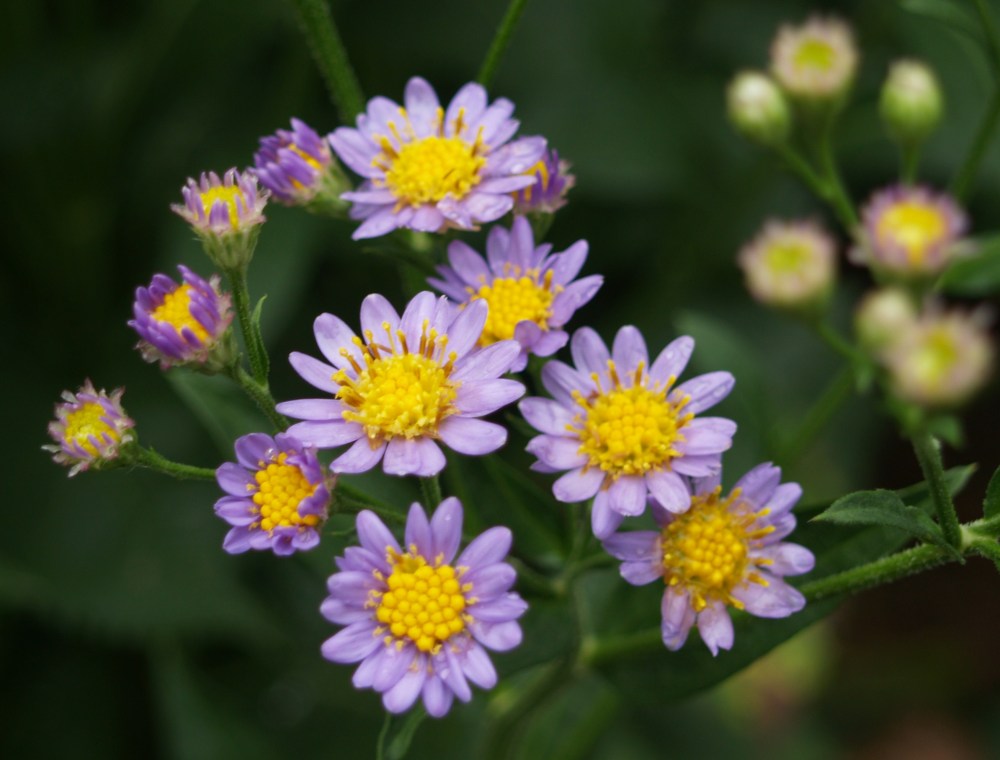
The garden behind the house is considerably larger, and sunnier than the front, but it is bordered by a mature forest of poplars and maples to the south, and large evergreens and flowering trees to the north, so there are few spots where the summer sun blazes through the day. The sunny slope of excavated dirt below the swimming pond is planted with young dogwoods, hydrangeas, edgeworthias, yuccas, and perennials (such as false indigo, Baptisia australis) that will tolerate the poor, dry soil. Towering above the tall shrubs is Tatarian daisy (Aster tataricus ‘Jindai’, above), with ruggedly corrugated leaves and dainty blue flowers with yellow centers.
Despite the horrid heat of this summer, and without supplemental irrigation the daisy has grown taller than six feet with rigid stems that barely sway in the breeze. With hundreds, perhaps thousands of buds that will bloom into mid-October the small flowers seem out of place on the coarsely textured plants, which seem more suited to the brazenly beautiful sunflowers.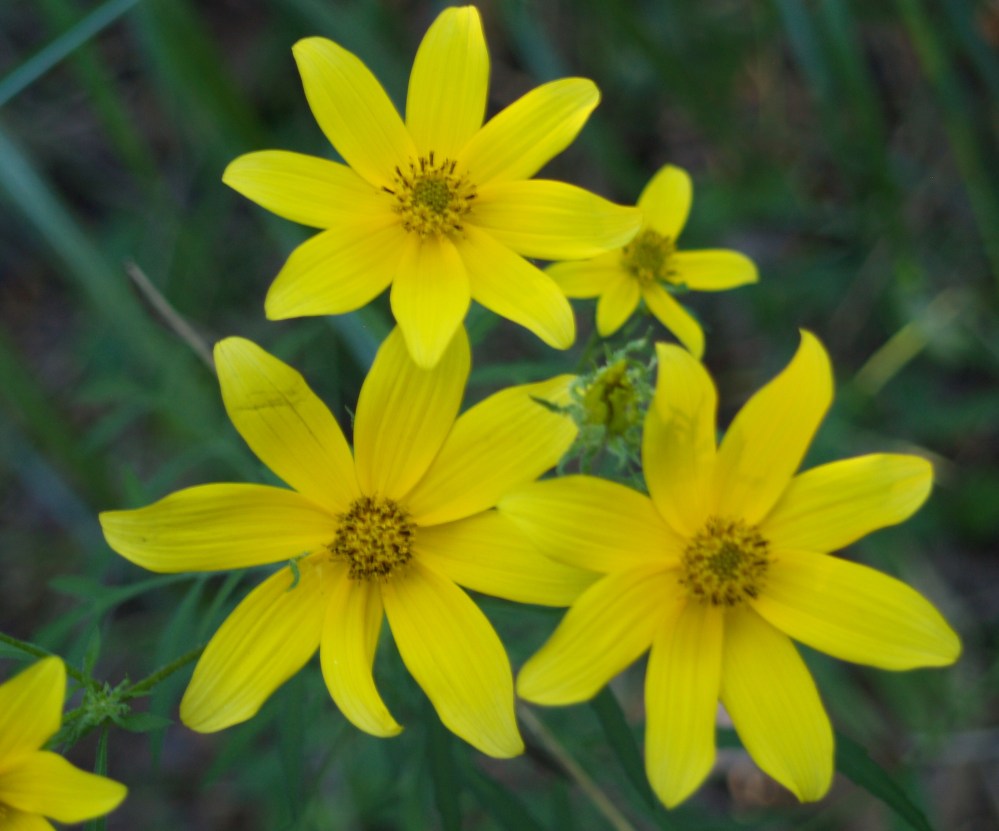
By contrast, the perennial sunflowers (above) are refined and finely textured, though the flowers scream for attention. The bright yellow blooms poke out here and there, shoehorned into spaces tighter than they would prefer. The tall stems are not so rigid as the daisy’s, and heavy with blooms they flop about and lean on the neighboring shrubs. A lower growing variety, ‘Low Down’ (Helianthus saliciflius ‘Low Down’, below) is tucked behind daylilies and under the branches of ‘Wolf Eyes’ dogwood, and though the spot is not full sun, it seems happy enough.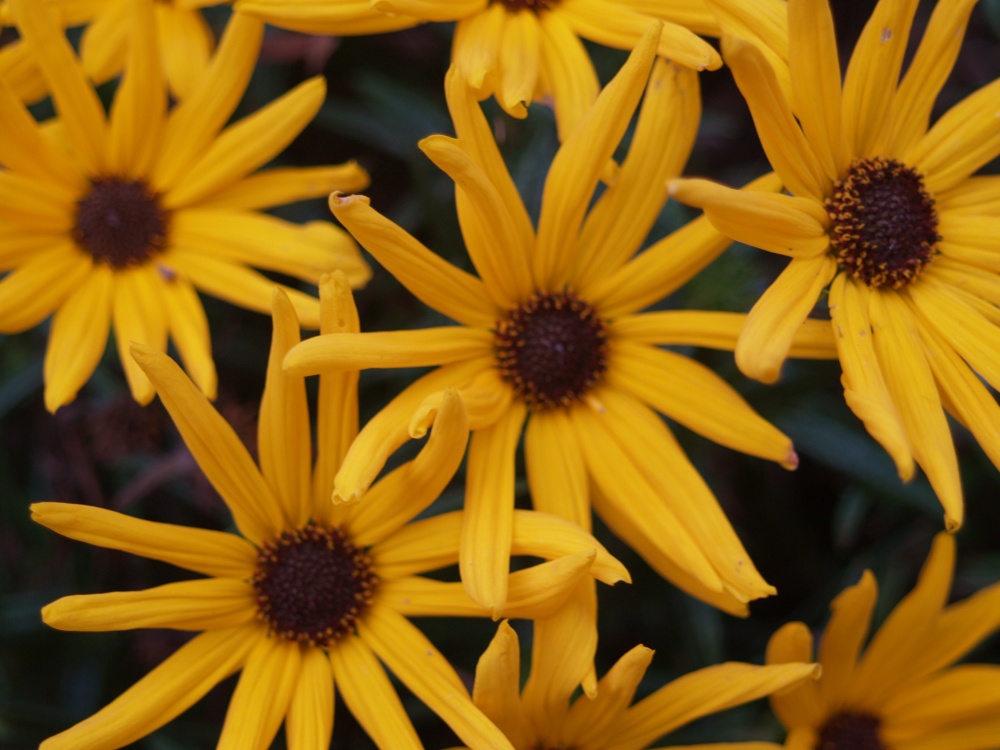
Nearly as bright as the sunflower is goldenrod (Solidago sphacelata ‘Golden Fleece’, below), with slender, arching stems cloaked with tiny yellow blooms. Golden Fleece is more compact than other goldenrods, drought tolerant, and does not seed itself about like the native.

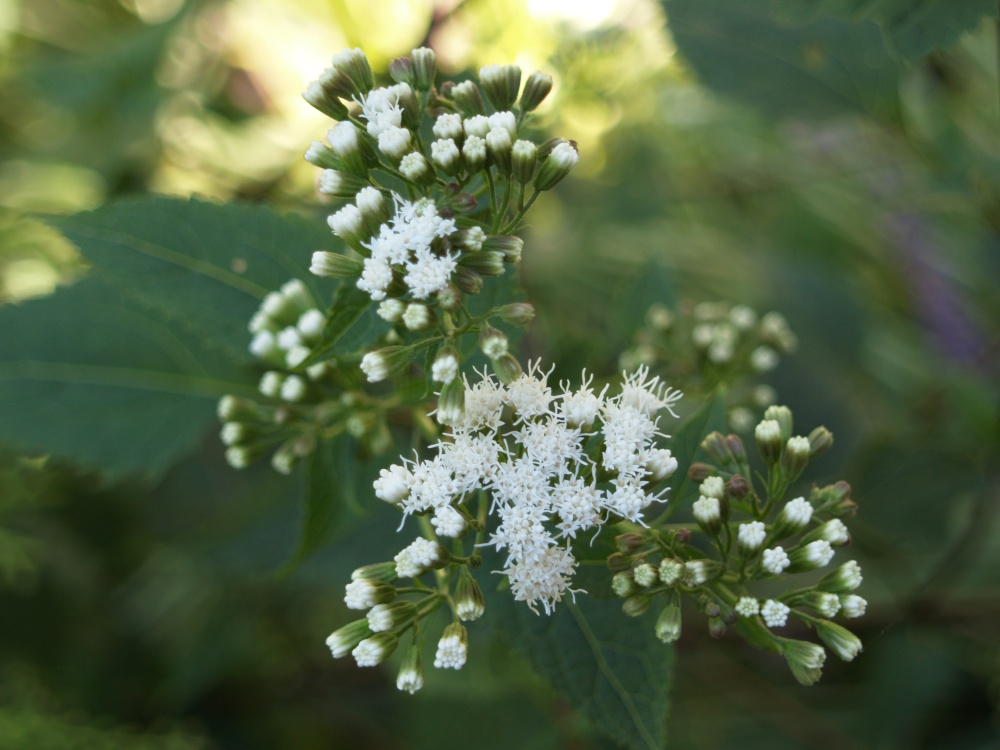 As the blooms of caryopteris and Seven Son Tree have begun to fade, bees and butterflies have made their way to the tall Tatarian daisy, Joe Pye Weed (Eupatorium ‘Chocolate’, above), and salvias (below). A dozen of the Chocolate Joe Pye have spread by seed from a single plant, and now I cannot recall which was the original. New seedlings are easily eliminated if they’re growing where they’re not wanted.
As the blooms of caryopteris and Seven Son Tree have begun to fade, bees and butterflies have made their way to the tall Tatarian daisy, Joe Pye Weed (Eupatorium ‘Chocolate’, above), and salvias (below). A dozen of the Chocolate Joe Pye have spread by seed from a single plant, and now I cannot recall which was the original. New seedlings are easily eliminated if they’re growing where they’re not wanted. 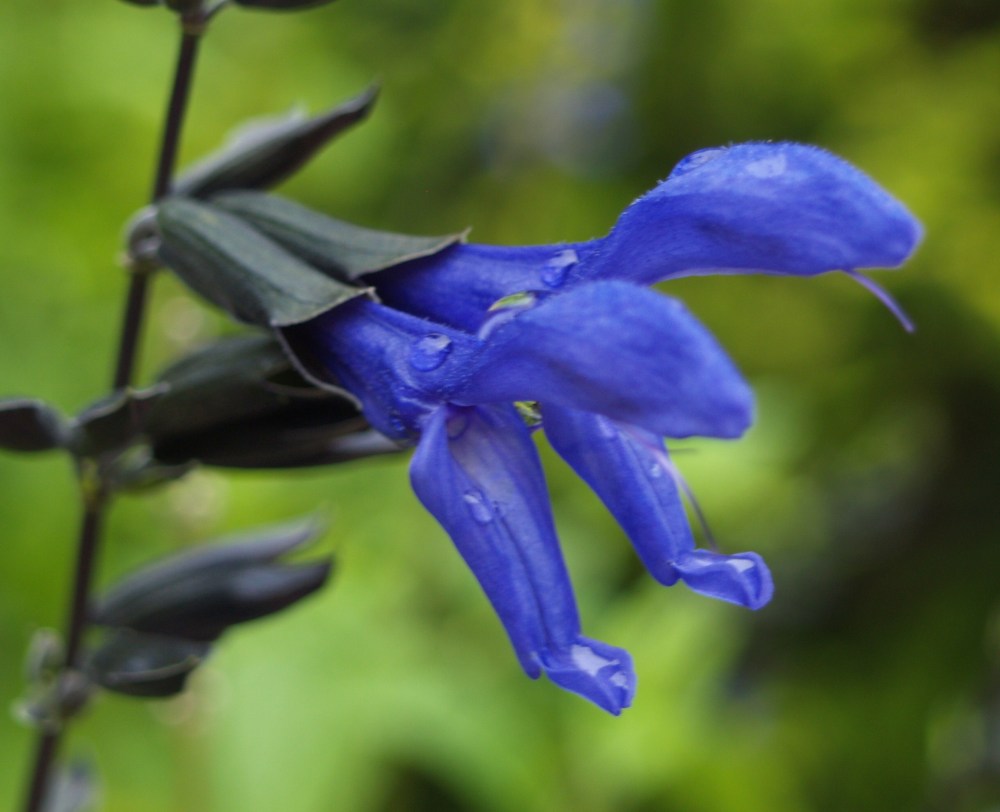
There are slight variations in leaf color, with some darker than others, but their growth is a quite compact three feet compared to others that grow to six feet or taller.